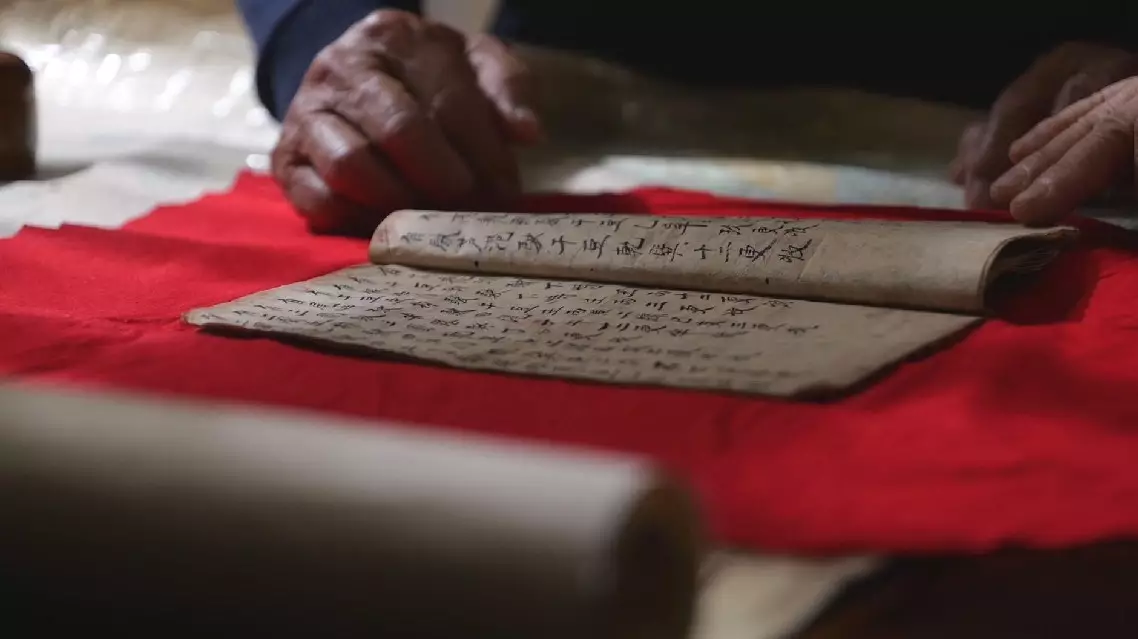Local authorities of east China's Ganzhou City of Jiangxi Province have taken prompt action to deal with aftermath from rounds of heavy rainfalls and severe weather, which caused significant damage to houses and triggered widespread flooding.
Firefighting and rescue forces have been mobilized to conduct post-disaster cleanup operations without delay. In addition, reservoirs have been opened to release floodwaters to augment storage capacity in preparation for potential future heavy rainfalls.
On Sunday morning, Zuoxi Village in Chongyi County was hit by strong convective weather, such as strong winds, heavy rains and hails. Several houses were damaged and large vegetable greenhouses were knocked down by hailstones.
Local firefighting and rescue forces rushed to the scene, assisting the villagers in clearing debris such as tiles, wooden beams and steel shed frames blown down by the strong winds. They also helped the villagers move items such as cabinets, sofas, and refrigerators to temporary shelters.
Strong winds toppled down trees. Firefighters used chainsaws to cut the trees into sections and moved them to safer areas. Subsequently, firefighters used high-powered blowers to clear the road of gravels and tree trunks.
To actively respond to the next round of heavy rainfalls and alleviate the flood control pressure, the floodgates of reservoirs and power stations in Xinfeng County have been opened to release floodwaters so as to create additional storage capacity.

China’s Jiangxi speeds up post-storm cleanup, floodwater release from reservoirs
Centuries-old maps handed down to fishermen by their ancestors in Tanmen Township of China's southernmost Hainan Province provides compelling evidence to China's sovereignty over the South China Sea, according to a China Global Television Network (CGTN) documentary released on Friday.
Like many people in Tanmen, Lu Jiabing was born into a fishermen' family going back generations. What distinguishes Lu's family is a treasured family heirloom -- a booklet used to navigate the South China Sea which Tanmen residents call "Genglubu", meaning "Route Map."
Each family's Genglubu is different from another. Passed down through successive generations, the documents embody the Tanmen fishermen's adventurer spirits, and have become an important basis for China's territorial rights in the South China Sea. "I'm not sure when this Genglubu was written. Anyway, it's been passed down from generation to generation, and I'm the sixth in line to inherit it. We used it along with a compass at sea. The needle of the compass points toward south and north. 'Zi' refers to north and 'Wu' to south. There are 24 squares, each containing one character. One square represents 15 degrees, and there are 360 degrees in total," Lu told CGTN.
Out on the vast ocean, the compass and Genglubu have forged new routes at sea for the fishermen over the past centuries. One line of text on the map indicates a route From the Xisha Islands' Panshiyu in the central part of the sea to the Nansha Islands' Shuangzi in its south, covering some 280 nautical miles.
Among Tanmen's fishermen of centuries past, there were several hundred Genglubu in circulation, and the Lu family's manuscript is one of the most detailed. It records 135 routes -- 84 in the Nansha Islands and 38 in the Xisha Islands.
"One red circle represents a single sea route. Our ancestors' exploration covered the entire South China Sea. It has been passed down through generations. Whenever my grandfather headed out to sea, he would read Genglubu by the light of kerosene lamp the previous night. I'd climb on his back to look at it along with him. In the beginning, I would follow my father to work in the Nansha Islands. We would stay there for six months. We sailed all over the Nansha Islands," said Lu.
Long before satellite navigation or even accurate nautical charts came into being, Hainan fishermen used Genglubu and drove wooden sailboats to cultivate the sea. These documents have survived to witness the development the South China Sea islands by local people.
"This is the sea chart passed down in my family. The names marked on the entire nautical chart were all left by our ancestors. Meiji Island (Panganiban Reef) was called 'Shuangmen.' These are the sections that are connected. We call them 'Duanjie' as it's easier to remember. Its official name is Ren'ai Reef. These places are known as the 'ancestral waters.' These are the places our ancestors explored and developed. So, I feel proud of them," Lu said.

Centuries-old map shows how ancient Chinese fishermen navigated South China Sea










